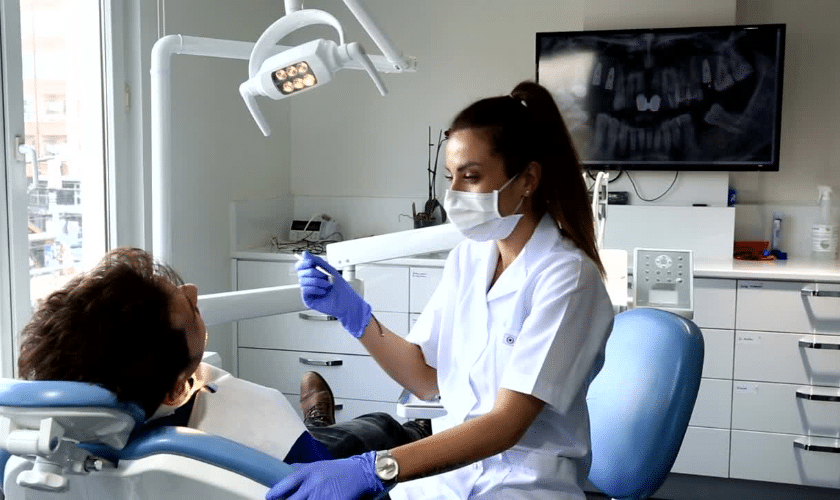908-282-3366
Tooth Fractures and Emergency Dentistry: Treatment Options and Outcomes

A sudden crunch, a sharp pain – tooth fractures can occur unexpectedly, sending us into a state of discomfort and concern. Whether from an accident, injury, or underlying dental conditions, these fractures demand immediate attention.
Understanding the types, treatments, and outcomes of tooth fractures is essential for proactive dental care. Join us as we delve into the world of emergency dentistry, exploring the nuanced approaches to treating tooth fractures and ensuring optimal outcomes for your dental health.
Types of Tooth Fractures: Understanding the Varieties
Tooth fractures are diverse and can range from minor chips to more severe fractures that extend deep into the tooth structure. The classifications typically include:
Cracked Tooth: These fractures extend vertically from the chewing surface towards the root, often causing discomfort during chewing. They might only sometimes be visible, making diagnosis challenging without a thorough dental examination.
Chipped Tooth: Often superficial and confined to the enamel, these fractures are visible as a small piece missing from the tooth. They might not cause immediate pain but can lead to sensitivity.
Craze Lines: These are tiny hairline cracks that occur on the enamel’s surface. While typically harmless and superficial, they can be cosmetically bothersome, especially if they accumulate stains.
Vertical Root Fracture: Starting from the root of the tooth and extending upwards, these fractures are often asymptomatic and may only be detected through X-rays.
Split Tooth: A more advanced stage of a cracked tooth where the tooth separates into distinct segments. Salvaging the tooth at this stage can be challenging.
Understanding these distinctions is crucial as the treatment approach varies based on the type and severity of the fracture.
Immediate Actions: Managing Tooth Fractures
The immediate response after a tooth fracture can significantly impact the subsequent treatment and outcome. Rinsing the mouth gently with lukewarm water helps cleanse the area, reducing the risk of infection. Applying a cold compress or ice pack on the cheek can reduce swelling and alleviate pain.
If a portion of the tooth has broken off, carefully retrieve it and store it in a container of milk or saliva. This might assist the dentist in potential restoration efforts.
However, the most vital step is seeking emergency dental care promptly. Quick action increases the likelihood of saving the tooth and receiving appropriate treatment.
Emergency Dentistry Procedures: Restoring Dental Integrity
Upon examination, dentists employ various procedures to address tooth fractures, aiming to restore both function and aesthetics:
Dental Bonding: Utilized for minor chips, this involves applying a tooth-colored resin to the damaged area and then hardening it with a specialized light. It’s an effective cosmetic fix for minor damage.
Dental Crowns: For more extensive damage, a crown that encapsulates the entire tooth is recommended. Crowns provide structural support and restore the tooth’s appearance and function.
Root Canal Therapy: When a fracture extends into the tooth’s pulp, causing infection or damage, this procedure becomes necessary. It involves removing the infected or damaged tissue, disinfecting the area, and sealing it to prevent further issues.
The choice of treatment depends on the fracture’s severity and its impact on the tooth’s structural integrity.
Outcomes and Recovery: Post-Treatment Care
Post-treatment care significantly influences the recovery process and long-term outcomes. Following the dentist’s instructions regarding prescribed medications, maintaining meticulous oral hygiene, and attending scheduled follow-up appointments are imperative.
Compliance with these guidelines ensures optimal healing and reduces the risk of complications such as infections or further damage to the tooth.
Proactive Measures: Mitigating Dental Emergencies
Preventive measures are key in averting tooth fractures and other dental emergencies:
Mouthguards: Custom-fitted mouthguards are essential during sports activities to prevent injuries to the teeth and jaw.
Avoiding Hard Substances: Refraining from chewing on hard objects like ice, pens, or nuts significantly reduces the risk of tooth damage.
Regular Dental Check-ups: Routine visits to the dentist facilitate early detection and management of dental issues, preventing potential fractures or other complications.
In the realm of dental emergencies, knowledge and prompt action are critical. Understanding the nuances of tooth fractures, seeking immediate care, and following through with comprehensive treatments are essential steps toward favorable outcomes.
Let’s actively fortify our dental resilience, ensuring not just immediate relief but sustained oral health and radiant smiles for years to come.




